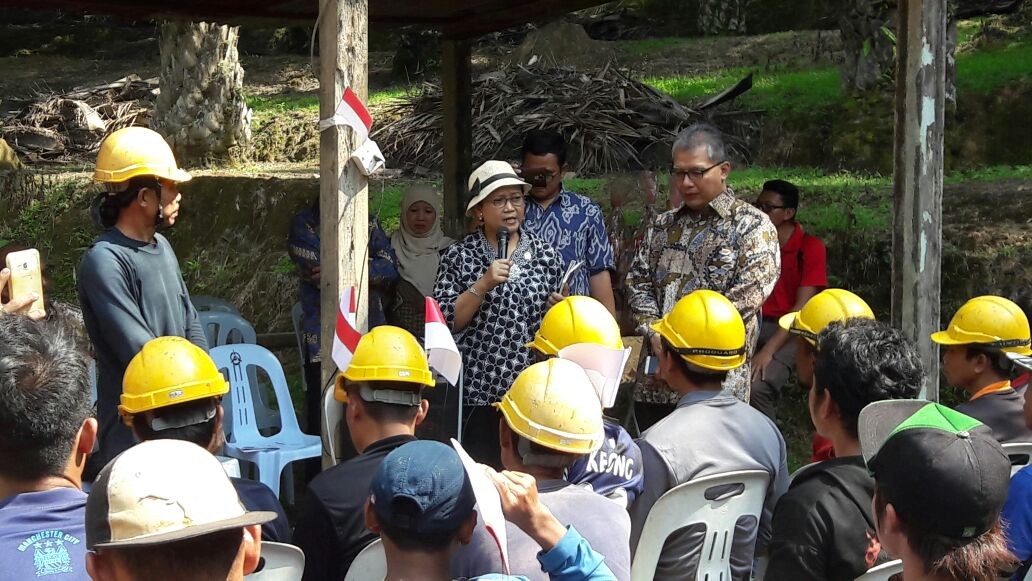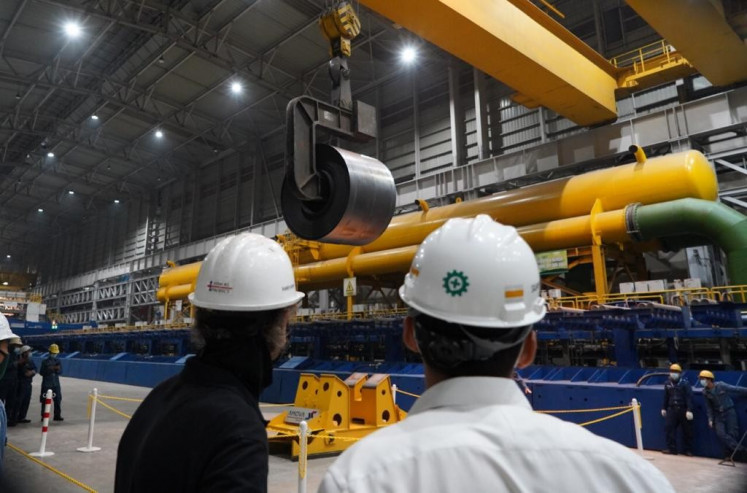Popular Reads
Top Results
Can't find what you're looking for?
View all search resultsPopular Reads
Top Results
Can't find what you're looking for?
View all search resultsThe problem with ASEAN's new migrant workers pact
As of 2015, there were over 450,000 migrant workers deployed from and to ASEAN countries, as noted by the International Labor Migration.
Change text size
Gift Premium Articles
to Anyone
O
n the sidelines of the ASEAN Summit in Manila from Nov. 11-14, ASEAN leaders signed the newly adopted pact on migrant workers. The pact, officially the ASEAN Consensus on the Promotion of the Rights of Migrant Workers, promotes fair treatment of migrant workers, the right to visit their families, and prevention of abuse, exploitation and violence.
As of 2015, there were over 450,000 migrant workers deployed from and to ASEAN countries, as noted by the International Labor Migration. The new pact, adopted a decade after the signing of the Cebu Declaration on the Protection and the Promotion of the Rights of Migrant Workers, is claimed to serve as a stronger basis to meet and protect migrant labor in ASEAN countries.
But interestingly, only two ASEAN members, Indonesia and the Philippines, have ratified the International Convention on the Protection of the Rights of All Migrant Workers and Members of their Families. Cambodia once signed but never acceded to the convention.
Like other ASEAN agreements, it is unsurprising that the newly-signed pact of migrant workers is non-legally binding. With the ASEAN Committee on Migrant Workers tasked to ensure the effective implementation of the commitments made and to facilitate the development of an ASEAN instrument to protect migrant workers, the responsibility to meet such commitments falls under the self-awareness of each member state.
Besides being non-legally binding, several other problems arise when we look at the pact in detail.
Among others, the pact contains the reference to “the prevailing national laws, regulations, and policies of ASEAN Member States”. This “decentralized” approach does not bring fresh air to the situation of migrant workers across ASEAN, nor does it solve the unequal treatment of migrant workers.
Of course the non-uniform migrant worker laws in each ASEAN member state are part of their respective sovereignty.
Moreover, the overarching focus of the agreement on fair or unfair treatment neglects the importance of a standardized treatment towards migrant workers. This gap leaves each ASEAN member to decide what laws are to be passed based on their own judgments. In consequences, unfair treatment of migrant workers as defined in one ASEAN state may be considered fine in others.
In addition, the agreement does not specify in detail what constitutes fair or unfair treatment. From Chapter 1 to 7, the agreement only mentions fair treatment for the fulfillment of migrant rights yet lacking necessary details.
The pact is also silent on individual or collective procedures to complain in the face of unexpected, unfair treatment. The agreement only describes ASEAN member states’ responsibility and duties to fulfill migrant workers’ rights without mentioning necessary details on how migrant workers can file complains against the receiving state that breaches its obligation.
In comparison, for instance, the European Convention on the Legal Status of Migrant Workers mentions, “Migrant workers shall be entitled, under the same conditions as nationals, to full legal and judicial protection of their persons and property and of their rights and interests.”
However, in the ASEAN pact, such regulation is absent. The most probable and common procedure is of course to access local courts in the receiving state, but it is not mentioned clearly how the procedure takes place.
Thus the absence of procedure, in fact, does not reflect a people-oriented ASEAN as often claimed, but reaffirms ASEAN’s non-inclusive and elitist approach in protecting migrant workers.
It is too soon to assess how ASEAN and its member states will voluntarily comply and enact the non-binding regional agreement on migrant workers. But based on wording of the agreement with missing crucial parts needed to ensure their rights, it is sufficient to question ASEAN and its members’ commitment in establishing a framework of protection and promotion of migrant workers rights.
***
The writer is a research associate at the ASEAN Studies Center, Gadjah Mada Univeristy in Yogyakarta, and currently pursuing post-graduate studies in law at the Leiden University, the Netherlands.
---------------
We are looking for information, opinions, and in-depth analysis from experts or scholars in a variety of fields. We choose articles based on facts or opinions about general news, as well as quality analysis and commentary about Indonesia or international events. Send your piece to academia@jakpost.com.










